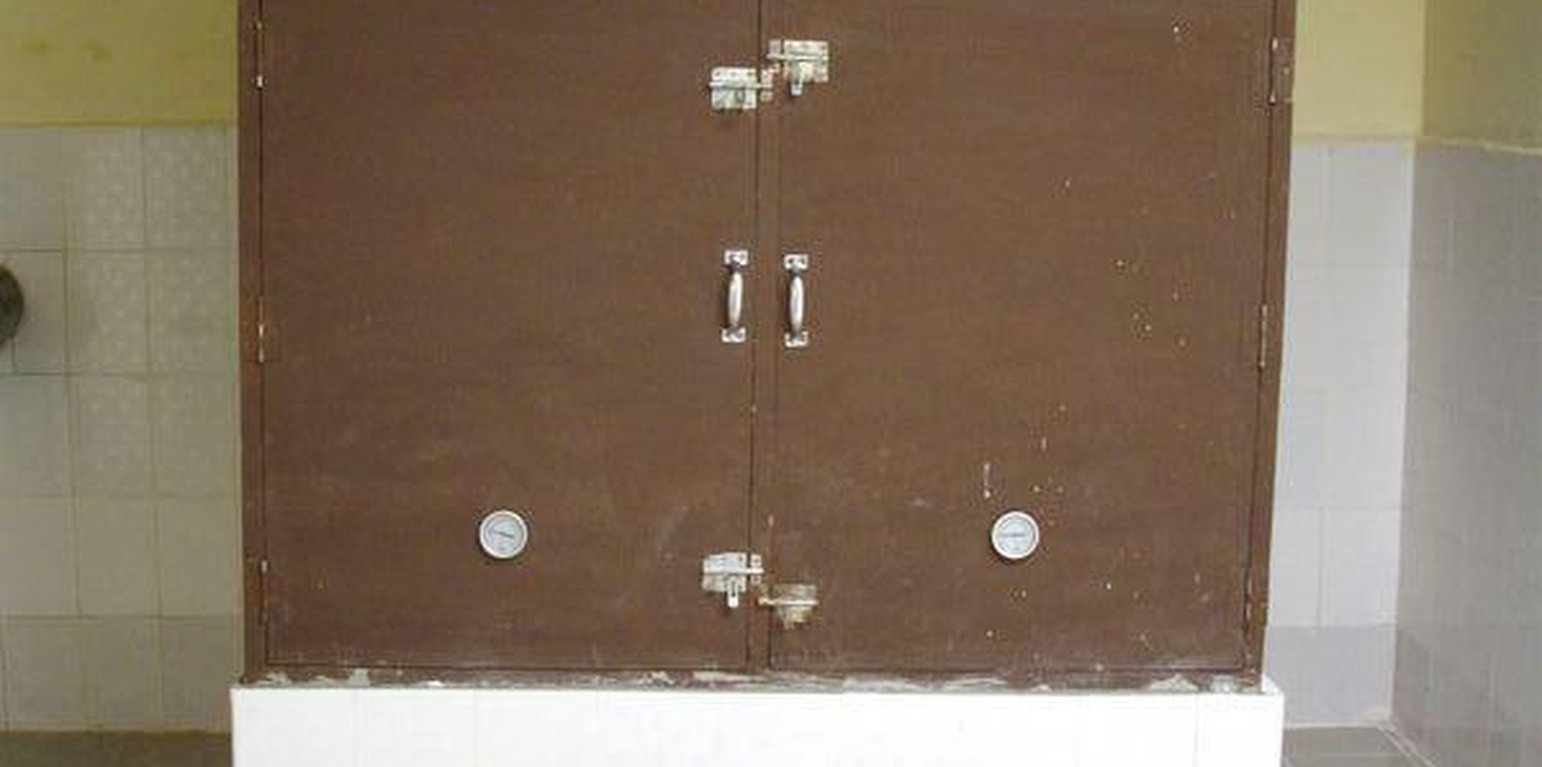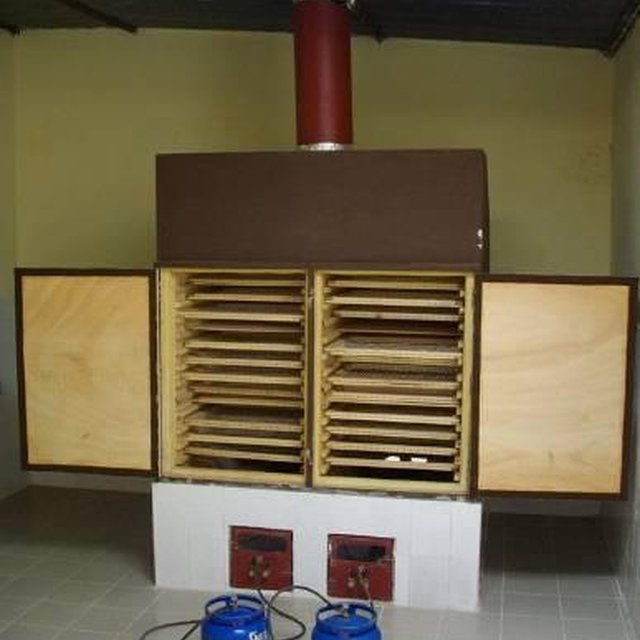



It comprises: 2 compartments, 2 thermometers, 4 burners, 20 trays and 4 baffles. The drying process is natural (natural convection). Moving produce around the unit (top to bottom, back to front) every two hours helps homogenise the drying process.
Purpose of the Technology: The objectives of using a dryer are: to improve productivity and the quality of dried mango; to demonstrate the technical and economic benefits of the system; to promote the use of Atesta dryers among processing outfits. There are reduced drying times (100 kilograms of pulp in 20 hours) and improved product quality (good colour and taste). The total output quantity from each production cycle is 14 kilograms of dried mango from 100 kilograms of mango pulp / output quality: 10 kilograms prime quality, 4 kilograms secondary quality. A minimum quantity of 524 kilograms must be produced to make the activity profitable. The dryer has a lifespan of five years.
Establishment / maintenance activities and inputs: Source and quantity of energy used: 12 kilograms of gas in 24 hours. Duration of machine operation: 20 hours per production cycle. Drying temperature: 70 to 80ºC. Water content of end product: 15%. Duration of activities: 24 hours. Type of raw material: fresh mango. Receipt/sorting/weighing of raw material: 100 kilograms of mango pulp per production cycle. Cleaning and preparing the raw material: washing in chlorinated water (3 to 5 drops per litre), peeling, stone removal, and cutting into slices one to five millimetres thick. Processing operations: Packaging the final product in plastic sachets of 100, 200 and 500 grams, and one kilogram.
Implementation: The dryer is on show at Ségou demonstration centre where promoters come and express their interest. Interested parties then apply to PCDA. These applications are reviewed by the Regional Centre for the Approval of Sub-Projects (CRAP), which comprises the governor, banks, research and oversight bodies (ROBs) and inter-branch organisations. Once approved by CRAP, the project must subsequently be approved by the National Centre for the Approval of Sub-Projects (CNAP) in Bamako. Successful promoters are informed and then pay their contribution. PCDA and the ROBs provide training and support, and carry out monitoring. Part of the training involves exchange trips to visit promoters outside the region. Roles of the actors involved: PCDA promotes innovations, subsidises financing, provides support and undertakes evaluation. ROBs carry out studies, monitoring and reporting, and support promoters. Banks/microfinance institutions provide co-funding and loans, and train up promoters. Promoters contribute financially to their training and implement the project.
Location: Sikasso town, Bougouni, Koutiala, Bamako and Ségou, Mali, Mali
No. of Technology sites analysed:
Spread of the Technology:
In a permanently protected area?:
Date of implementation: less than 10 years ago (recently)
Type of introduction





Increased quality and quantity of dry animal products and vegetables
Reduced drying times and improved product quality. Each kilogram of processed dried mango incurs a cost of 2,063 CFA Francs; break-even point in terms of quantity: a minimum quantity of 524 kilograms must be produced to make the activity profitable.
more efficient use of resources (e.g. food products), reduced pressure on land